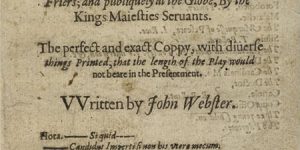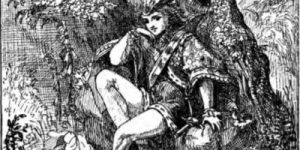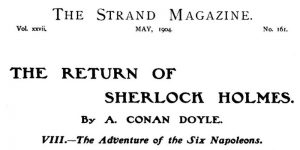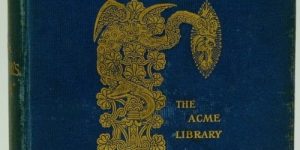The Lair of the White Worm by Bram Stoker
The Lair of the White Worm Chapter I – Adam Salton Arrives
The Lair of the White Worm Chapter II – The Caswalls Of Castra Regis
The Lair of the White Worm Chapter III – Diana’s Grove
The Lair of the White Worm Chapter IV – The Lady Arabella March
The Lair of the White Worm Chapter V – The White Worm
The Lair of the White Worm Chapter VI – Hawk And Pigeon
The Lair of the White Worm Chapter VII – Oolanga
The Lair of the White Worm Chapter VIII – Survivals
The Lair of the White Worm Chapter IX – Smelling Death
The Lair of the White Worm Chapter X – The Kite
The Lair of the White Worm Chapter XI – Mesmer’s Chest
The Lair of the White Worm Chapter XII – The Chest Opened
The Lair of the White Worm Chapter XIII – Oolanga’s Hallucinations
The Lair of the White Worm Chapter XIV – Battle Renewed
The Lair of the White Worm Chapter XV – On The Track
The Lair of the White Worm Chapter XVI – A Visit Of Sympathy
The Lair of the White Worm Chapter XVII – The Mystery Of “The Grove”
The Lair of the White Worm Chapter XVIII – Exit Oolanga
The Lair of the White Worm Chapter XIX – An Enemy In The Dark
The Lair of the White Worm Chapter XX – Metabolism
The Lair of the White Worm Chapter XXI – Green Light
The Lair of the White Worm Chapter XXII – At Close Quarters
The Lair of the White Worm Chapter XXIII – In The Enemy’s House
The Lair of the White Worm Chapter XXIV – A Startling Proposition
The Lair of the White Worm Chapter XXV – The Last Battle
The Lair of the White Worm Chapter XXVI – Face To Face
The Lair of the White Worm Chapter XXVII – On The Turret Roof
The Lair of the White Worm Chapter XXVIII – The Breaking Of The Storm
The Lair of the White Worm Chapter III – Diana’s Grove
Curiosity took Adam Salton out of bed in the early morning, but when he had dressed and gone downstairs; he found that, early as he was, Sir Nathaniel was ahead of him. The old gentleman was quite prepared for a long walk, and they started at once.
Sir Nathaniel, without speaking, led the way to the east, down the hill. When they had descended and risen again, they found themselves on the eastern brink of a steep hill. It was of lesser height than that on which the Castle was situated; but it was so placed that it commanded the various hills that crowned the ridge. All along the ridge the rock cropped out, bare and bleak, but broken in rough natural castellation. The form of the ridge was a segment of a circle, with the higher points inland to the west. In the centre rose the Castle, on the highest point of all. Between the various rocky excrescences were groups of trees of various sizes and heights, amongst some of which were what, in the early morning light, looked like ruins. These—whatever they were—were of massive grey stone, probably limestone rudely cut—if indeed they were not shaped naturally. The fall of the ground was steep all along the ridge, so steep that here and there both trees and rocks and buildings seemed to overhang the plain far below, through which ran many streams.
Sir Nathaniel stopped and looked around, as though to lose nothing of the effect. The sun had climbed the eastern sky and was making all details clear. He pointed with a sweeping gesture, as though calling Adam’s attention to the extent of the view. Having done so, he covered the ground more slowly, as though inviting attention to detail. Adam was a willing and attentive pupil, and followed his motions exactly, missing—or trying to miss—nothing.
“I have brought you here, Adam, because it seems to me that this is the spot on which to begin our investigations. You have now in front of you almost the whole of the ancient kingdom of Mercia. In fact, we see the whole of it except that furthest part, which is covered by the Welsh Marches and those parts which are hidden from where we stand by the high ground of the immediate west. We can see—theoretically—the whole of the eastern bound of the kingdom, which ran south from the Humber to the Wash. I want you to bear in mind the trend of the ground, for some time, sooner or later, we shall do well to have it in our mind’s eye when we are considering the ancient traditions and superstitions, and are trying to find the rationale of them. Each legend, each superstition which we receive, will help in the understanding and possible elucidation of the others. And as all such have a local basis, we can come closer to the truth—or the probability—by knowing the local conditions as we go along. It will help us to bring to our aid such geological truth as we may have between us. For instance, the building materials used in various ages can afford their own lessons to understanding eyes. The very heights and shapes and materials of these hills—nay, even of the wide plain that lies between us and the sea—have in themselves the materials of enlightening books.”
“For instance, sir?” said Adam, venturing a question.
“Well, look at those hills which surround the main one where the site for the Castle was wisely chosen—on the highest ground. Take the others. There is something ostensible in each of them, and in all probability something unseen and unproved, but to be imagined, also.”
“For instance?” continued Adam.
“Let us take them seriatim. That to the east, where the trees are, lower down—that was once the location of a Roman temple, possibly founded on a pre-existing Druidical one. Its name implies the former, and the grove of ancient oaks suggests the latter.”
“Please explain.”
“The old name translated means ‘Diana’s Grove.’ Then the next one higher than it, but just beyond it, is called ‘Mercy‘—in all probability a corruption or familiarisation of the word Mercia, with a Roman pun included. We learn from early manuscripts that the place was called Vilula Misericordiae. It was originally a nunnery, founded by Queen Bertha, but done away with by King Penda, the reactionary to Paganism after St. Augustine. Then comes your uncle’s place—Lesser Hill. Though it is so close to the Castle, it is not connected with it. It is a freehold, and, so far as we know, of equal age. It has always belonged to your family.”
“Then there only remains the Castle!”
“That is all; but its history contains the histories of all the others—in fact, the whole history of early England.” Sir Nathaniel, seeing the expectant look on Adam’s face, went on:
“The history of the Castle has no beginning so far as we know. The furthest records or surmises or inferences simply accept it as existing. Some of these—guesses, let us call them—seem to show that there was some sort of structure there when the Romans came, therefore it must have been a place of importance in Druid times—if indeed that was the beginning. Naturally the Romans accepted it, as they did everything of the kind that was, or might be, useful. The change is shown or inferred in the name Castra. It was the highest protected ground, and so naturally became the most important of their camps. A study of the map will show you that it must have been a most important centre. It both protected the advances already made to the north, and helped to dominate the sea coast. It sheltered the western marches, beyond which lay savage Wales—and danger. It provided a means of getting to the Severn, round which lay the great Roman roads then coming into existence, and made possible the great waterway to the heart of England—through the Severn and its tributaries. It brought the east and the west together by the swiftest and easiest ways known to those times. And, finally, it provided means of descent on London and all the expanse of country watered by the Thames.
“With such a centre, already known and organised, we can easily see that each fresh wave of invasion—the Angles, the Saxons, the Danes, and the Normans—found it a desirable possession and so ensured its upholding. In the earlier centuries it was merely a vantage ground. But when the victorious Romans brought with them the heavy solid fortifications impregnable to the weapons of the time, its commanding position alone ensured its adequate building and equipment. Then it was that the fortified camp of the Caesars developed into the castle of the king. As we are as yet ignorant of the names of the first kings of Mercia, no historian has been able to guess which of them made it his ultimate defence; and I suppose we shall never know now. In process of time, as the arts of war developed, it increased in size and strength, and although recorded details are lacking, the history is written not merely in the stone of its building, but is inferred in the changes of structure. Then the sweeping changes which followed the Norman Conquest wiped out all lesser records than its own. To-day we must accept it as one of the earliest castles of the Conquest, probably not later than the time of Henry I. Roman and Norman were both wise in their retention of places of approved strength or utility. So it was that these surrounding heights, already established and to a certain extent proved, were retained. Indeed, such characteristics as already pertained to them were preserved, and to-day afford to us lessons regarding things which have themselves long since passed away.
“So much for the fortified heights; but the hollows too have their own story. But how the time passes! We must hurry home, or your uncle will wonder what has become of us.”
He started with long steps towards Lesser Hill, and Adam was soon furtively running in order to keep up with him.
The Lair of the White Worm Chapter IV – The Lady Arabella March










